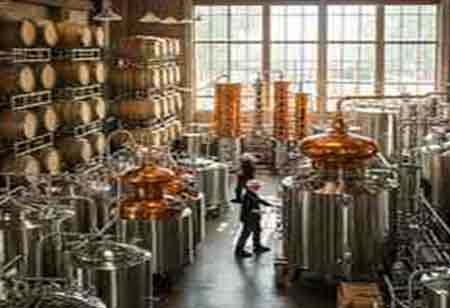Thank you for Subscribing to Food Business Review Weekly Brief
Understanding the Production of Wine, Beer, and Spirits
Producing wine, beer, and spirits involves distinct processes that shape their flavors and compositions.

By
Food Business Review | Friday, April 11, 2025
Stay ahead of the industry with exclusive feature stories on the top companies, expert insights and the latest news delivered straight to your inbox. Subscribe today.

Fremont, CA: The production of alcoholic drinks encompasses various processes that affect their flavors, compositions, and attributes. Wine, beer, and spirits each adhere to specific methods of fermentation, distillation, and maturation, resulting in differences in complexity and sophistication. Although all three rely on the fundamental principle of converting sugars into alcohol, the distinct ingredients, techniques, and production timelines differentiate them.
Wine: The Art of Fermentation
Wine is predominantly produced from the fermentation of grapes or various fruits. The process starts with carefully selecting and crushing fresh grapes to obtain their juice. Yeast is then added to commence fermentation, transforming the natural sugars into alcohol over weeks or months. The length of fermentation and aging plays a crucial role in determining the wine's body, aroma, and flavor complexity—Winemakers frequently age wine in wooden barrels or stainless steel tanks to enrich its character. Red wine is fermented with the skins, which imparts tannins and a rich color, as opposed to white wine, which is fermented without the skins, resulting in a lighter and more refreshing taste.
Beer: A Balance of Malt and Hops
The beer production process entails fermentation of malted grains, predominantly barley, using yeast and water. In contrast to wine-making, brewing incorporates mashing, where grains are immersed in hot water to extract fermentable sugars. The resulting liquid, wort, is subsequently boiled with hops to impart bitterness, aroma, and stability.
Yeast is then added to ferment the sugars, converting the wort into beer over several days or weeks. Lager beers undergo fermentation at lower temperatures and require a longer duration, whereas ales ferment at higher temperatures, resulting in more pronounced flavors. The interplay of malt, hops, and yeast is essential in creating various global beer styles.
Spirits: The Precision of Distillation
Spirits differ fundamentally from wine and beer due to their unique production processes. The primary method involved is distillation, which concentrates alcohol by heating a fermented base and capturing the resulting purified vapor. Spirits like whiskey, vodka, and rum originate from fermented grains, fruits, or sugar-based materials.
Following fermentation, the liquid is distilled using specialized equipment to isolate alcohol from unwanted impurities. The resulting spirit is often aged in barrels, enhancing its flavor and smoothness. The elevated alcohol distinguishes spirits, rendering them more potent than wine or beer. The selection of ingredients and aging methods is crucial in shaping the character of each spirit, adding to its complexity and richness.
The production methods for wine, beer, and spirits are distinct, each affecting their flavors and compositions. Wine production prioritizes fermentation and aging, beer emphasizes the balance of grains and hops, while spirits depend on distillation and refinement. These varied processes contribute to the wide range of alcoholic beverages, accommodating diverse tastes and cultural traditions.






